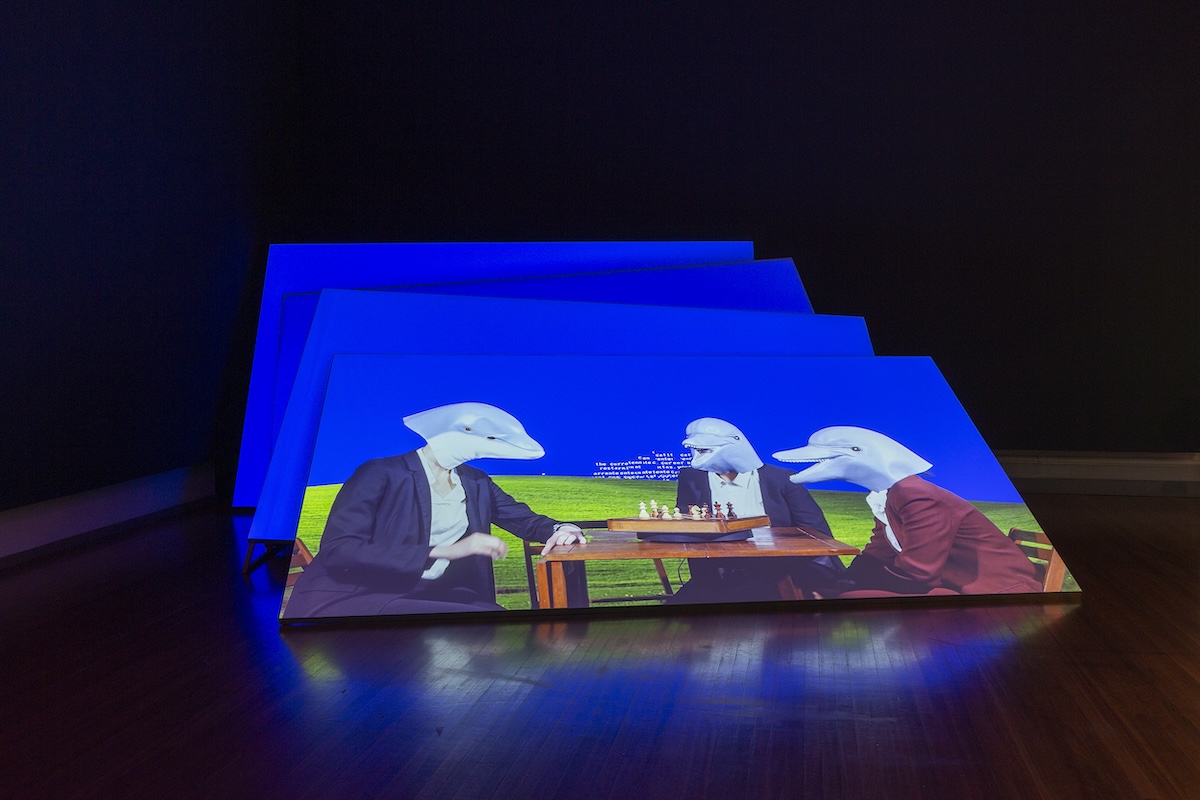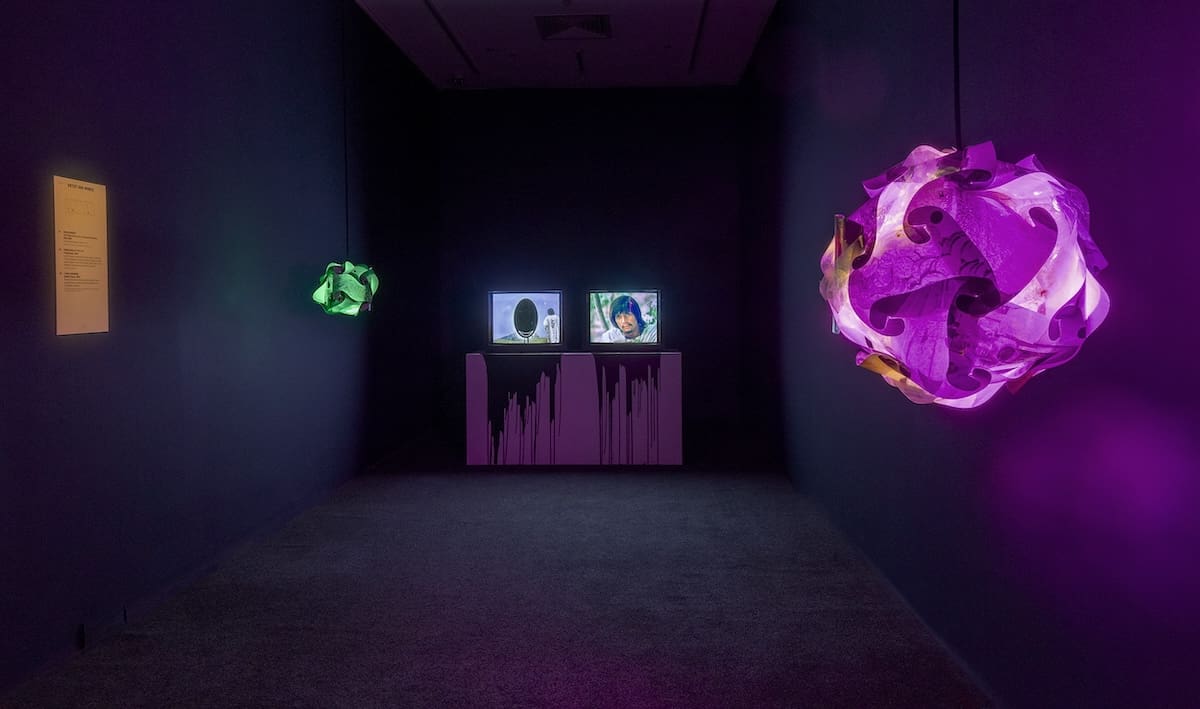
Jennifer Kemarre Martiniello’s Glass Acts
Telstra National Aboriginal and Torres Strait Islander Art Awards 2025 finalist Jennifer Kemarre Martiniello has spent decades crafting an art practice that weaves together memory, heritage and form.





On The Fall’s 1980 song ‘Impression of J. Temperance’, singer Mark E. Smith tells the story of a reclusive dog breeder who has created a new form of life: the hideous replica. “It’s a lens through which to think about the present,” says Sean Dockray. “We’re trying to probe that strangeness of the contemporary and see it for what it is. Sometimes it’s quite vile, and sometimes maybe that strangeness could lead somewhere quite interesting.”
Dockray and Joel Stern, who are both artists and writers, used the song as the point of departure to co-curate This Hideous Replica, a holistic experimental art undertaking which encompasses an exhibition, performance programs, publishing and much else. “The ideas in the show get fleshed out in different domains,” says Stern. “It’s a really diverse show in terms of art forms and disciplines.”
Strange and surreal copies haunt these works, many of which include multiplying forms: four flags by New York artist Joshua Citarella, eight hands by architectural artist Anna Vasof, four paintings by Melbourne artist Amy May Stuart, 12 lampshades by queer artist collective Debris Facility. Video screens cascade in a shower of visuals. “We wanted there to be a really powerful diversity of aesthetic approaches, experiences and artistic practices to show, in a prismatic way, how these ideas can be approached from lots of different angles and produce lots of different experiences,” says Stern.
The show is especially timely in the contemporary age, when anxieties about artificial intelligence and the online world infiltrate daily existence: “That’s the new twist on that tale of reproduction,” Dockray says. But unlike other exhibitions or projects approaching these ideas, what is presented in This Hideous Replica is neither positive nor negative – it’s a cerebral thought experiment, designed to provoke reflection. “This show is a critical show, but it’s marked by a bit more of an ambivalence, a deferring – it’s not a moralising show,” Stern says. “It’s more about the bewildering unreality of a lot of aspects of life today, or even the way that we’ve normalised this feeling of not knowing what’s real or unreal… A lot of the works in the show wallow in the weird in-between spaces.”
This Hideous Replica features both local and international artists, with many in the former group already creatively in conversation, and the latter getting a chance to join in. “About half the artists that are in the show already are quite aware of each other’s work, maybe already collaborate with one another, or perform in similar contexts,” Dockray says. “There’s an opportunity for an evolving discussion…. Replication becomes a new game to play with one another, or the next chapter in a conversation.”
In producing the written element of the show, Dockray and Stern took a number of unorthodox approaches, from ChatGPT-generated scripts to poetry, drawings and writing from other artists, such as American researcher Angie Waller who writes “with and against AI systems”. The text is scattered through the exhibition’s didactic panels. “It’s supposed to feel like a disassembled book,” says Stern. “As you move through the exhibition, you’re both looking at the artworks and reading the exhibition like a text.”
The project’s first iteration of accompanying events, under the banner Replica School, took place as a part of Now or Never festival in August, with performances, lectures and workshops extrapolating on the exhibition’s themes. Artists and thinkers included Australian cultural theorist McKenzie Wark, Japanese avant-garde musician Tomomi Adachi and Irish musician and artist Jennifer Walshe. “They brought their own deep, intense, weird and interesting perspectives to the project, entirely separately from the exhibition,” says Stern. A second public program is in development to be delivered near the end of the project, for yet another perspective on these big questions.
The physical exhibition will also experience a change in form as the curators deinstall and reinstall it, switching up the order of the presentation and thus playing further with meaning and interpretation. Stern refers to Naomi Klein’s book Doppelganger, which points to the pivotal stage when the doppelganger and the original meet in the mirror world: “We wanted to insert into the curatorial logic this moment where the show gets destabilised and artworks clash with one another.”
This Hideous Replica
RMIT Gallery
On now—16 November
